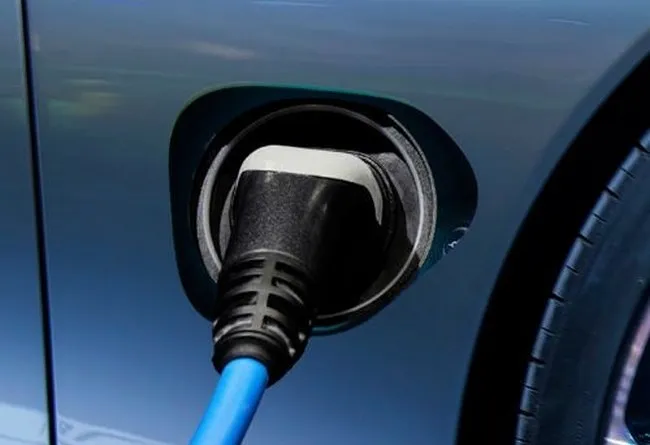Plugging in to sustainable mobility
- Copy
The global transport sector accounts for about a quarter of greenhouse gas (GHG) emissions, and a sizeable amount of that comes from cars, buses, and trucks. Besides the environmental consequences of these emissions, pollution and smog also cause serious health impacts on society. Therefore, promoting sustainable modes of transport is essential for countries to achieve both their de-carbonisation and public health goals.
Auto manufacturers today invest heavily in lowering the carbon footprints of their vehicles. Birla Carbon, one of the world's leading manufacturers of carbon black solutions, plays a vital role in this industry by facilitating the development of next-generation batteries for electric vehicles, power electronics and stationary energy storage. By enabling battery manufacturers to improve the energy efficiency of vehicles, Birla Carbon is helping shape the future of sustainable, planet-friendly mobility.

Pushing the limits of battery technology
The demand for sustainable transport has been increasing for some time. A report by the International Energy Agency found that the number of electric and plug-in hybrid cars on the world's roads tripled between 2018 and 2021. Breakthroughs in battery technology, especially lithium-ion batteries – which power everything from electric vehicles to home electronics and storage systems – have played a role in driving this demand.
Building on a decade of success in lead acid, in 2021, Birla Carbon entered the energy systems market to help battery manufacturers, including those in the automotive industry, to meet stringent CO2 emission regulations. Using highly conductive carbon blacks, Birla Carbon improves the energy density, power density, and charging speed of the battery cells used in the next generation of vehicles.
While carbon black is used in tyres and other vehicle parts to improve their safety, weight and durability, Birla Carbon's energy system solutions make lithium-ion and lead acid batteries more efficient. Its highly engineered carbon blacks improve the battery energy capacity as well as the efficiency of battery production processes. These improvements can significantly impact battery production costs which directly lead to lower costs of electric vehicles.
Powering tomorrow, sustainably
Birla Carbon's intensive R&D effort has resulted in various conductive carbon solutions, including ConductexTM i carbons, CNT/CB Hybrid materials, graphite anode materials, and ConductexTM e carbons. Used across lithium-ion and lead acid battery applications, these innovative solutions effectively address the problems faced by battery manufacturers including domestic supply availability.
Here's how Birla Carbon's solutions are powering the development of efficient and sustainably manufactured batteries for a wide range of needs.

ConductexTM i
The Conductex i range of carbon materials enables lithium-ion battery manufacturers to address common challenges related to charging rates, energy density, and manufacturing product throughput. With its superior processing characteristics, energy-dense active materials, longer cycle life and efficiency, and extremely high purity, ConductexTM i carbons are engineered to meet the needs of electric vehicles and energy storage applications.
CNT/CB Hybrid
Also used in lithium-ion batteries, CNT/CB is a hybrid carbon black/CNT conductive additive. The product provides increased electrical conductivity and power density to batteries and can also be provided as a pre-dispersion to improve ease of use for battery manufacturers. A pre-dispersion of the CNT/carbon black hybrid materials reduces mixing time for energy and cost savings and also ensures safe material handling. The exceptional behaviour at high voltage during lithium-ion battery cycling provides performance benefits for batteries that demand both a high energy density and high power density.
Graphite anode materials
Birla Carbon has expanded its battery materials portfolio to include advanced graphite anode active materials. In 2022, the company invested in a graphite manufacturing and post-processing semi-commercial plant in the United States with its new-to-the-world technology to supply graphite anode active materials to battery manufacturers.
Birla Carbon has also partnered with multiple US universities and industry bodies to produce battery-grade graphite (a key component of lithium-ion batteries) from biocrude. The material, called Biocrude Derived Anode Material (BDAM), offers an innovative and sustainable way to develop graphite, while enhancing circularity for the whole value chain.
ConductexTM e
Manufacturers of lead acid batteries are required to meet specific consumer needs and OEM parameters with regard to charge acceptance, cycle life, water loss, etc. Birla Carbon’s ConductexTM e carbons are performance-enhancing carbon black additives that provide high conductivity and purity, enabling manufacturers to meet these needs while providing the formulation flexibility needed to meet their sustainability targets.
As flagbearers of sustainable mobility, electric and low-emission vehicles are essential for a healthier planet. With its cutting-edge range of carbon black solutions for the energy systems market, Birla Carbon is accelerating the global transition to energy-efficient transport systems that promote happier outcomes for human progress, public health, and environmental well-being. Birla Carbon is committed to building a more secure advanced battery material supply chain through sustainable world-class operational and commercial expertise. In every action, Birla Carbon supports sustainable economic development and prosperity, while advancing community and worker engagement, job quality, diversity, equity, inclusion, and accessibility.

















